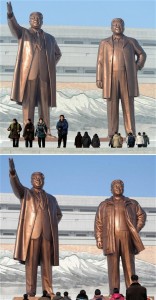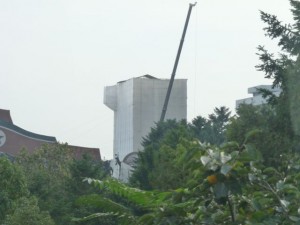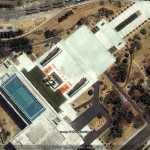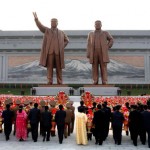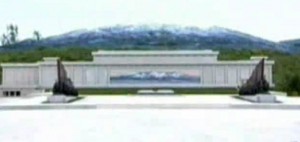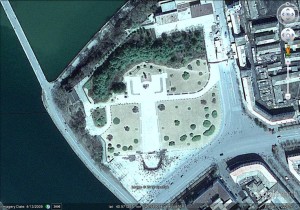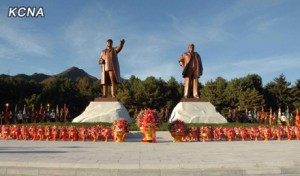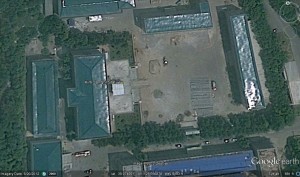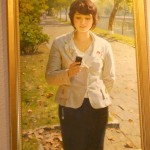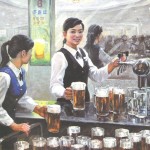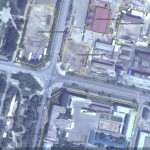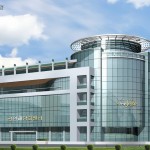UPDATE 3 (2013-1-10): Kyodo (via The Telegraph) solves the riddle of just why the Kim statues on Mansu Hill were covered up in October 2012 (See below)–a new version of the Kim Jong-il statue was put up. It replaced a statue that was erected in April 2012.
Below is a before/after comparison.
UPDATE 1 (2012-10-3): A reader sends in this image of the statues covered up.
Ruedeger Frank also publishes an image at 38 North.
ORIGINAL POST (2012-9-24):
Pictured above are satellite and ground-level images of the Kim Il-sung and Kim Jong-il statues on Mansu Hill. Although these statues were unveiled just this past April, word on the street is that they are once-again hidden under a protective covering that was placed on the site sometime in mid-September. Unfortunately, there are not yet any pictures of the new wraps.
Although it is unclear why the statues have been covered up, Occam’s razor tells me that they are doing some maintenance work of some kind.
On a related note, the Mansu Hill model replica at the newly constructed Pyongyang Folk Village is missing its Kim statues as well. North Korean television footage of Kim Jong-un’s visit to the newly-opened park revealed a Mansudae Grand Monument that looked rather hollow in the center owing to the absence of the Kim statues:
As we all know, official images of the leaders are produced exclusively by the Mansudae Art studio in Pyongyang’s Phyongchon District. Either the art studio has not gotten around to making miniature replicas of the statues on Mansu Hill or this exhibit will never have them.
I believe the latter is probably the case.
From an ideological perspective, miniature Kim replicas would not inspire the masses the way the real [large] statues are meant to. They would almost certainly cause confusion. Can you imagine bowing to a statue shorter than you? Actually from the television footage it is difficult to make out the scale of the site, but it is quite probable that even miniature statues would be larger than life-size.
From a fiscal perspective, installing real [miniature] Kim Il-sung and Kim Jong-il statues would be expensive for the park managers. In addition to the cost of commissioning the two statues, the park managers would have to begin treating this part of the park as an actual revolutionary site–with all the formality, expense and protocol associated therewith. I don’t think anybody wants that.
